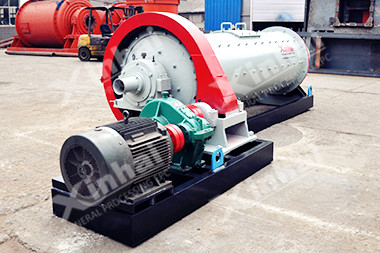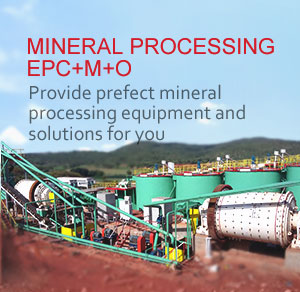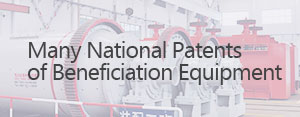- Home
- About
-
Mineral Processing EPC+M+O

Providing optimized solutions for your mine, one-stop service for mineral processing plant!
View details -
Product
- Grinding
- Classifying
Grinding & Classifying
- Flotation
- Gravity Separation Equipment
- Magnetic Equipment
- Gold Extraction Equipment
- Washing Equipment
Separating Process
- Thickening
- Dewatering Machine
Thickening & Dewatering
- Accessories
- Auxiliary Product
Consumables

Xinhai mineral processing equipment mainly include: grinding equipment, flotation equipment, dewatering equipment, magnetic separation equipment, and so on. Some of the equipment is Xinhai independent research and development, and has been awarded national patent. View details
-
Solutions
- Gold Tailings
- Tailings
Tailings

Gold CIP Production Line adsorbs gold from cyaniding pulp by active carbon including 7 steps: leaching pulp preparation, cyaniding leaching, carbon adsorption, gold loaded carbon desorption, pregnant solution electrodeposit, carbon acid regeneration, leaching pulp. View details
- Case
-
News
- Contact
How is Gold Processed Step by Step
2025-04-29 XinHai Views (537)1. Introduction
The gold process step by step transforms raw ores into finished gold products. It is a complex journey involving many professional stages.
First, mined raw ores are crushed and screened to reduce their particle size.
Then, grinding and classification refine the ore particles, preparing them for ore dressing.
Next, techniques like gravity separation, flotation, and cyanidation enrich gold elements from gangue minerals.
Finally, smelting and purification remove impurities, producing high-purity gold ingots or other products.
This article elaborates on this precise and systematic gold process step by step.
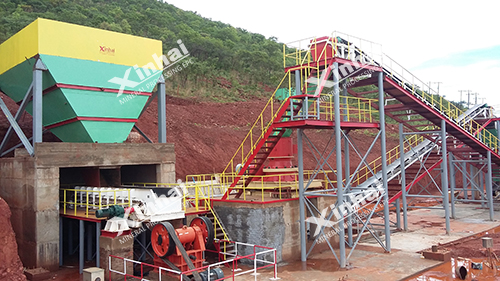
2. Ore Mining and Initial Handling
Mining Methods
Gold extraction starts with mining, using two primary methods:
Open-pit mining: Suitable for near-surface deposits. It involves removing soil and rock to access ore.
Underground mining: Used for deeper deposits. It extracts ore through tunnels and shafts, minimizing surface disruption.
The choice of method depends on ore depth, deposit shape, and environmental concerns.
An efficient gold mining plant is crucial for both methods.
Transport to Processing Plant
Mined ore is moved to the gold processing plant using trucks, conveyors, or railways.
Large operations often use in-pit crushing systems to reduce transportation distances.
Initial Screening and Impurity Removal
At the gold processing plant, ore undergoes preliminary screening.
Overbelt magnets remove tramp metal.
Vibrating screens separate waste rocks.
This step improves efficiency for downstream processes.
3. Crushing and Grinding
Crushing Equipment
Jaw crushers break large ore pieces into smaller chunks.
Cone crushers further reduce the size to gravel (10–20 mm).
Grinding Mills
Semi-autogenous (SAG) mills grind the ore using its own particles.
Ball mills refine the particles to a sand-like texture (<100 microns).
Importance of Particle Size
Proper grinding liberates gold particles from rock, helping recovery during leaching.
Over-grinding wastes energy.
Under-grinding lowers recovery rates.
Particle size control is key in the gold process step by step.
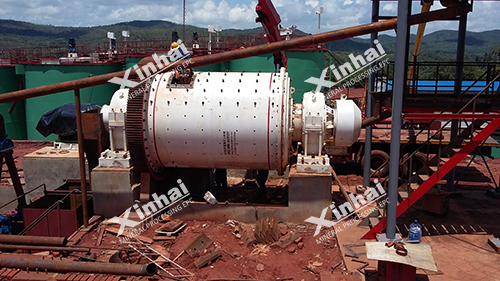
4. Beneficiation Processes
Gravity Separation
Due to its high density (19.3 g/cm³), gold can be separated by:
Shaking tables: Dense gold settles, while lighter waste flows away.
Centrifugal concentrators: Spin at high speeds to capture gold.
Flotation
Air bubbles attach to gold minerals treated with collectors (e.g., xanthates).
The gold-bearing bubbles rise to the surface, separating from waste.
Cyanidation (CIP and CIL)
Leaching: Gold dissolves in a cyanide solution under alkaline conditions.
CIP (Carbon-in-Pulp): Activated carbon adsorbs dissolved gold after leaching.
CIL (Carbon-in-Leach): Combines leaching and adsorption in one tank, saving time.
CIL is better for clay-rich ores.
CIP works better for cleaner slurries.
Both methods are standard at a modern gold processing plant.
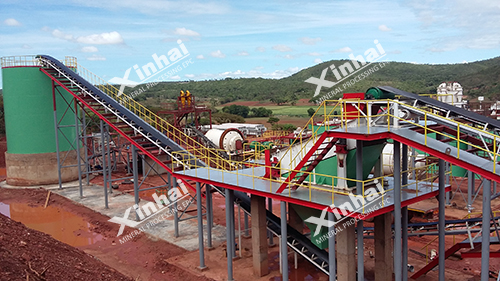
5. Tailings Processing
Thickening and Dewatering
Tailings (waste slurry) are thickened using cyclones or deep-cone thickeners.
Water is recovered for reuse.
Filter presses or vacuum drums further remove moisture.
Disposal and Reprocessing
Tailings are stored in engineered dams lined to prevent leakage.
Advanced techniques like bioleaching allow reprocessing to recover more gold.
This approach enhances sustainability at the gold mining plant.
Resource Recovery
Byproducts like copper or silver are also extracted, adding revenue.
6. Gold Recovery and Refining
Elution
Loaded carbon undergoes elution.
Hot caustic solution strips gold into a concentrated form.
Electrowinning
Gold ions are electroplated onto steel wool cathodes, producing a sludge.
This sludge is washed and dried.
Smelting
The dried sludge is mixed with fluxes (e.g., borax) and melted at 1,200°C.
This yields doré bars with about 90% purity.
Refining
Doré bars are refined using aqua regia or electrolytic methods.
The final product reaches 99.99% purity, meeting London Bullion Market Association standards.
7. Quality Control and Assurance
Sampling: Automated samplers collect samples for XRF or fire assay analysis.
Parameter Monitoring: Real-time monitoring of pH, cyanide levels, and temperature optimizes processes.
Compliance: Plants adhere to LBMA and ISO standards for quality and environmental responsibility.
8. Environmental and Safety Considerations
Cyanide Management: Closed-loop systems and detoxification neutralize cyanide before discharge.
Pollution Control: Scrubbers capture mercury vapors; tailings dams prevent acid mine drainage.
Worker Safety: PPE, gas detectors, and emergency protocols protect staff in the gold mining plant.
9. Conclusion
Gold processing combines geology, chemistry, and engineering.
Every step, from mining to refining, demands precision.
Innovations like thiosulfate leaching and AI optimization are shaping greener futures.
By following the gold process step by step, modern gold processing plants and gold mining plants balance production with sustainability, securing gold’s value for generations.
Mineral Processing Technology
An overview of mineral processing technology, including its definition, purpose, methods, products, and historical development. ... [more]
Gold Heap Leaching: Technical Insights, Operational Strategies, and Future Directions
... [more]
Related Article
- Gold CIP Process: Principles, Flowsheet, Plant Design, and Best Practices
- What Is the Difference Between CIP and CIL Gold
- Gold Heap Leaching: Technical Insights, Operational Strategies, and Future Directions
- Gold Ore Beneficiation: Advancing Efficiency and Sustainability
- Gold Mining Equipment Costs: A Down-to-Earth Guide
- Gold Ore Gravity Separation Equipment
- Comprehensive Analysis of CIP in Gold Processing
- Affordable Gold Ore Processing Practical Guide for Growing Enterprises
- The Gold Processing Plant Cost
- Inspiration from Mali gold mine news: Gold Mining Management
Mineral Processing EPC
Solutions
CONTACT US
- Tel: 0086 15901320633
- Fax: 0086 10 59621207
- Email: mhxu@xinhaimining.net
© 2017 Shandong Xinhai Mining Technology & Equipment Inc. Technical Support: Beijing Xinhulian Technology Co., Ltd.
Factory Address: No. 188, Xinhai Street, Fushan high-tech industrial development district, Yantai, Shandong, China


